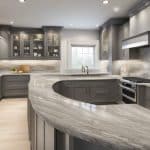Types Of Lighting
Introduction
Lighting is an essential aspect of any home or workspace. It is not only functional but also plays a crucial role in creating a comfortable and aesthetically pleasing environment. Understanding the different types of lighting and how to use them can help to improve the overall ambiance, enhance productivity, and even save energy costs.
Fundamentals of Lighting
Before delving into the different types of lighting, it is essential to understand the fundamentals of lighting. Lighting is the use of artificial or natural light to illuminate spaces and objects. Illumination can be categorized into three main types: ambient, task, and accent lighting. Ambient lighting provides overall illumination to a space, task lighting is used for specific activities such as reading or cooking, and accent lighting is used to highlight specific objects or features in a space.
Types of Light Bulbs
There are various types of light bulbs available in the market, including incandescent, fluorescent, LED, and halogen bulbs. Each type has its own set of advantages and disadvantages, making it essential to consider factors such as energy efficiency, lifespan, and brightness when choosing the right type of bulb for a specific application.
Key Takeaways
- Understanding the fundamentals of lighting is essential before delving into the different types of lighting.
- There are various types of light bulbs available, and each type has its own set of advantages and disadvantages.
- Proper use of lighting can improve the overall ambiance, enhance productivity, and even save energy costs.
Fundamentals of Lighting

Lighting is an essential part of any home or office space. It helps create a comfortable and functional environment by providing adequate illumination. There are three primary types of lighting: Ambient, Task, and Accent lighting. Each type of lighting serves a different purpose and can be used in combination to create an overall ambiance.
Ambient Lighting
Ambient lighting, also known as general lighting, provides overall illumination for a room. This type of lighting is typically achieved through overhead fixtures such as chandeliers, ceiling fans, or recessed lighting. Ambient lighting can help create a comfortable and inviting atmosphere by providing a soft and diffused light source.
Task Lighting
Task lighting is designed to provide bright and focused illumination for specific tasks. This type of lighting is typically used in areas where activities such as reading, cooking, or working are performed. Task lighting can be achieved through table lamps, floor lamps, or under-cabinet lighting. It is important to position task lighting correctly to avoid glare and shadows.
Accent Lighting
Accent lighting is used to highlight specific features or objects in a room. This type of lighting can create a dramatic effect and add depth and texture to a space. Accent lighting can be achieved through wall sconces, track lighting, or picture lights. It is important to use accent lighting sparingly to avoid overwhelming the space.
Overall, the key to effective lighting design is to create a balance between ambient, task, and accent lighting. By using a combination of these lighting types, you can create a comfortable and functional environment that is both aesthetically pleasing and practical.
Types of Light Bulbs
When it comes to lighting, there are a variety of light bulbs to choose from. Each type of light bulb has its own unique features and benefits. In this section, we will explore the different types of light bulbs and their characteristics.
LED Lighting
LED lighting has become increasingly popular in recent years due to its energy efficiency and long lifespan. LED bulbs use less energy than traditional incandescent bulbs and emit less heat. They are also available in a range of color temperatures, making them suitable for a variety of applications.
Incandescent Bulbs
Incandescent bulbs are the traditional light bulbs that most people are familiar with. They are inexpensive and provide warm, yellowish light. However, they are not very energy efficient and have a relatively short lifespan.
Halogen
Halogen bulbs are similar to incandescent bulbs but are more energy efficient and have a longer lifespan. They emit a bright, white light and are often used in task lighting.
Fluorescent Lights
Fluorescent lights are commonly used in commercial settings due to their energy efficiency and long lifespan. They emit a bright, white light and are available in a range of color temperatures. However, they can be slow to start up and may flicker.
When selecting a light bulb, it is important to consider factors such as energy efficiency, color temperature, and lifespan. LED bulbs are a great choice for those looking for an energy-efficient option, while halogen bulbs are a good choice for task lighting. Incandescent bulbs are inexpensive but not very energy efficient, and fluorescent lights are a good choice for commercial settings.
Lighting Fixtures and Styles
When it comes to lighting fixtures, there are a variety of styles available to suit different needs and preferences. Here are some of the most popular types of lighting fixtures and their styles.
Chandeliers and Pendant Lights
Chandeliers and pendant lights are both types of hanging light fixtures that can add a touch of elegance and sophistication to any room. Chandeliers are typically larger and more ornate than pendant lights, and they often feature multiple arms or tiers with several bulbs. Pendant lights, on the other hand, are smaller and more streamlined, and they typically feature a single bulb suspended from a cord or chain.
Both chandeliers and pendant lights can be used as a focal point in a room, and they can be used to create ambient lighting or task lighting depending on the style and placement. They are commonly used in dining rooms, entryways, and living rooms.
Wall Sconces and Vanity Lights
Wall sconces and vanity lights are both types of lighting fixtures that are mounted on the wall. Wall sconces are typically used for ambient lighting or accent lighting, and they come in a variety of styles and designs, from traditional to modern. Vanity lights, on the other hand, are typically used in bathrooms or dressing areas to provide task lighting for grooming and applying makeup.
Both wall sconces and vanity lights can be used to add a decorative touch to a room, and they come in a variety of sizes and styles to suit different needs and preferences.
Table and Floor Lamps
Table and floor lamps are both types of lighting fixtures that are designed to be placed on a flat surface. Table lamps are typically used for task lighting or accent lighting, and they come in a variety of styles and sizes, from small and simple to large and ornate. Floor lamps, on the other hand, are typically used for ambient lighting or task lighting, and they come in a variety of styles and designs, from modern to traditional.
Both table and floor lamps can be used to add a decorative touch to a room, and they come in a variety of materials and finishes to suit different decor styles.
Track and Recessed Lighting
Track and recessed lighting are both types of lighting fixtures that are installed in the ceiling. Track lighting features a series of adjustable heads that can be directed to provide task lighting or accent lighting, while recessed lighting features a series of small lights that are installed flush with the ceiling to provide ambient lighting or accent lighting.
Both track and recessed lighting can be used to add a modern and streamlined look to a room, and they are commonly used in kitchens, living rooms, and home offices.
Overall, there are a wide variety of lighting fixtures and styles available to suit different needs and preferences. Whether you are looking for ambient lighting, task lighting, or accent lighting, there is a lighting fixture out there that can meet your needs.
Design and Aesthetics
When it comes to interior design, lighting plays a crucial role in creating a comfortable and well-lit environment. But lighting isn’t just about functionality; it can also enhance the aesthetics of a space. In this section, we’ll explore different types of lighting that can add visual interest and create a fashionable atmosphere.
Architectural Lighting
Architectural lighting is a type of lighting that highlights the architectural features of a space. It can be used to create drama and depth, drawing attention to specific areas of a room. This type of lighting is often used in commercial spaces, such as museums and art galleries, but can also be used in residential spaces.
One example of architectural lighting is track lighting, which consists of a series of adjustable fixtures that can be directed towards specific areas. This type of lighting is often used to highlight artwork or other decorative elements.
Decorative and Fashionable Lighting
Decorative lighting is a type of lighting that is used to add visual interest to a space. It can be used to create a focal point or to add a touch of glamour to a room. Decorative lighting can take many forms, from chandeliers to table lamps.
Fashionable lighting, on the other hand, is a type of lighting that is used to create a trendy and stylish atmosphere. This type of lighting often features unique designs and can be used to create a statement piece in a room.
Natural vs. Artificial Lighting
Finally, it’s important to consider the role of natural and artificial lighting in creating a well-lit and aesthetically pleasing space. Natural lighting can create a warm and inviting atmosphere, while artificial lighting can be used to create a specific mood or ambiance.
When designing a space, it’s important to consider the balance between natural and artificial lighting. Natural lighting can be maximized by using light-colored walls and window treatments, while artificial lighting can be used to create a specific mood or atmosphere.
Overall, lighting plays a crucial role in creating a well-designed and aesthetically pleasing space. By using a combination of architectural, decorative, and fashionable lighting, as well as natural and artificial lighting, designers can create a space that is both functional and beautiful.
Practical Applications and Considerations
Indoor and Workspace Illumination
When it comes to indoor and workspace illumination, it is essential to consider the functionality and productivity of the lighting. The lighting should be designed in a way that it provides focused illumination on the workspace to avoid eye strain and increase productivity. The color temperature of the lighting should also be considered to ensure that it promotes a healthy and comfortable environment.
One of the most commonly used indoor lighting types is ambient or general lighting. This type of lighting provides overall illumination for a space and can be used for comfortable movement. Task lighting is also an important consideration when it comes to indoor and workspace illumination. It provides focused illumination on the workspace, making it easier for individuals to complete tasks with ease.
Outdoor and Landscape Lighting
Outdoor and landscape lighting is not only essential for aesthetic purposes but also for security reasons. Security lights are designed to provide bright illumination to deter intruders and ensure that the surrounding area is well-lit. Landscape lighting, on the other hand, is used to enhance the beauty of the outdoor space.
It is essential to consider the type of outdoor lighting that is being used. LED lights are one of the most energy-efficient options available and are designed to last longer than traditional lighting options. It is also important to consider the placement of the lighting to ensure that it is not obtrusive and does not cause any glare.
Lighting for Health and Safety
Lighting is an essential consideration when it comes to health and safety. Poor lighting can cause eye strain, headaches, and even affect an individual’s mood. It is important to consider the color temperature of the lighting to ensure that it promotes a healthy and comfortable environment.
In addition to this, it is also important to consider the placement of the lighting. Lighting should be placed in areas that are frequently used to avoid any accidents. For instance, staircases and hallways should be well-lit to prevent any accidents from occurring.
Overall, when it comes to lighting, it is important to consider the application and functionality of the lighting. The lighting should be designed in a way that promotes productivity, comfort, and safety. By considering these factors, individuals can ensure that they have the right lighting for their needs.






